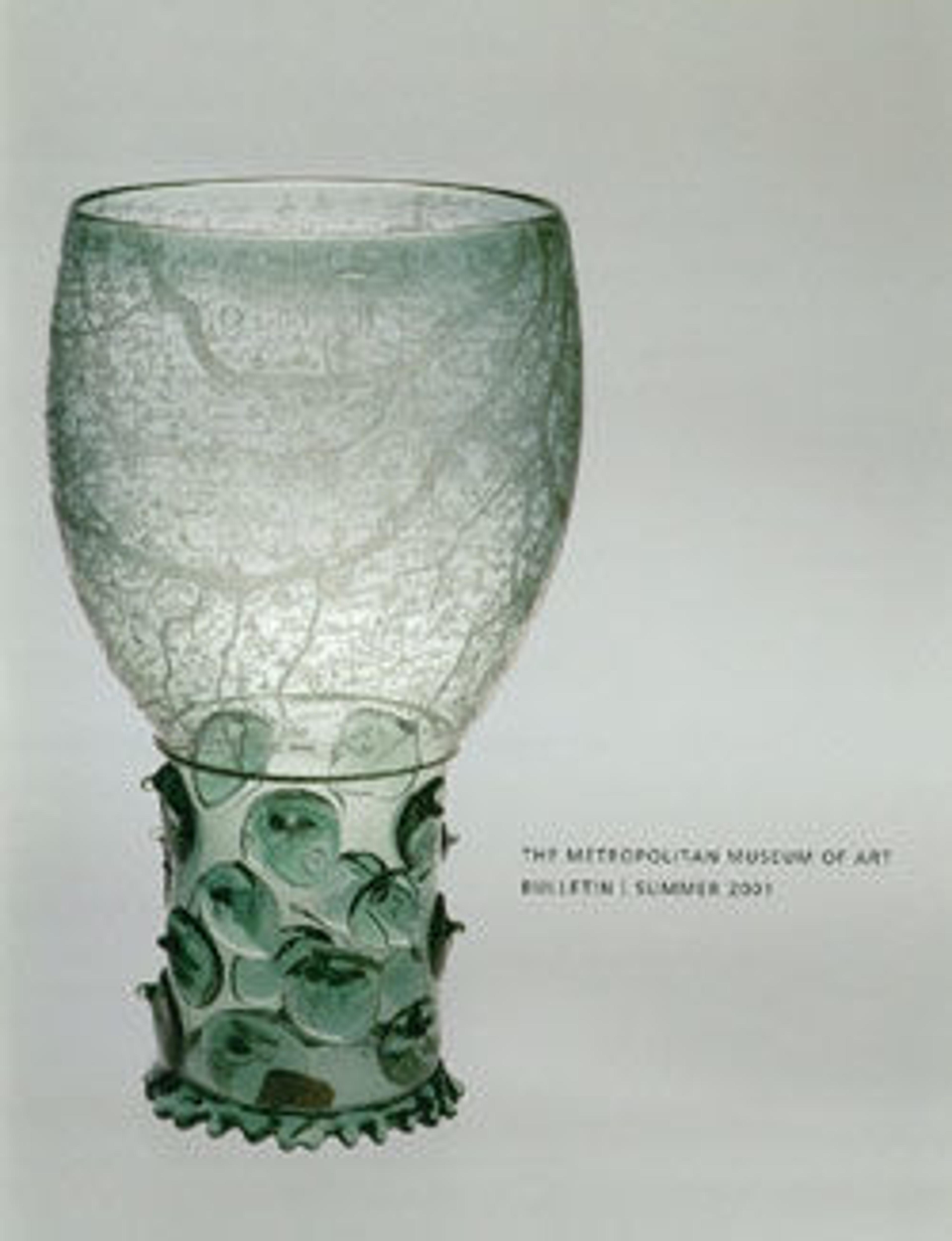Glass beaker with cut decoration
Translucent pale blue.
Vertical rim, cracked-off and ground flat, with bulge below; conical body with side tapering gently downwards; solid projecting knob on bottom.
Wheel-abraded decoration comprising at top two broad horizontal bands of lines, enclosing Greek letters with a diagonal band of short lines marking the beginning and/or end of the inscription; at center, a broad frieze containing two bunches of stylized grapes suspended from a T bar and flanked by wavy ribbons, alternating around side with two eight-armed stars; below, two bands of two horizontal lines flanking a band of short diagonal lines.
Intact; a few bubbles; faint iridescent weathering, with slight soil encrustation at bottom of interior.
The Greek inscription PIE ZHCHC (Drink [so that] you may live [well]) is an exhortation commonly found on both pottery and glass vessels. It probably echoes the kind of toast that would have been given at a drinking or dinner party. This beaker was likely made and decorated at a workshop in Syria, demonstrating that glassmakers (vitrarii) worked closely with glass cutters (diatretarii) in the production of glass tableware.
Vertical rim, cracked-off and ground flat, with bulge below; conical body with side tapering gently downwards; solid projecting knob on bottom.
Wheel-abraded decoration comprising at top two broad horizontal bands of lines, enclosing Greek letters with a diagonal band of short lines marking the beginning and/or end of the inscription; at center, a broad frieze containing two bunches of stylized grapes suspended from a T bar and flanked by wavy ribbons, alternating around side with two eight-armed stars; below, two bands of two horizontal lines flanking a band of short diagonal lines.
Intact; a few bubbles; faint iridescent weathering, with slight soil encrustation at bottom of interior.
The Greek inscription PIE ZHCHC (Drink [so that] you may live [well]) is an exhortation commonly found on both pottery and glass vessels. It probably echoes the kind of toast that would have been given at a drinking or dinner party. This beaker was likely made and decorated at a workshop in Syria, demonstrating that glassmakers (vitrarii) worked closely with glass cutters (diatretarii) in the production of glass tableware.
Artwork Details
- Title:Glass beaker with cut decoration
- Period:Late Imperial
- Date:4th–early 5th century CE
- Culture:Roman
- Medium:Glass; blown and cut
- Dimensions:H. 5 7/8 in. (14.9 cm)
diameter 2 3/4 in. (7.0 cm) - Classification:Glass
- Credit Line:Smith Fund, 1913
- Object Number:13.198.5
- Curatorial Department: Greek and Roman Art
More Artwork
Research Resources
The Met provides unparalleled resources for research and welcomes an international community of students and scholars. The Met's Open Access API is where creators and researchers can connect to the The Met collection. Open Access data and public domain images are available for unrestricted commercial and noncommercial use without permission or fee.
To request images under copyright and other restrictions, please use this Image Request form.
Feedback
We continue to research and examine historical and cultural context for objects in The Met collection. If you have comments or questions about this object record, please contact us using the form below. The Museum looks forward to receiving your comments.
